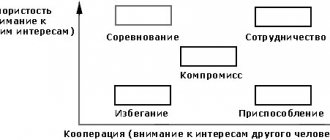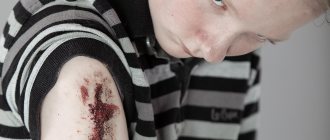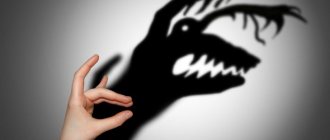Physical pain is something that a person experiences regularly throughout his life. But does the sensation of pain really depend only on physical factors? After all, in different situations people react to the same stimulus in different ways. It turns out that psychological attitudes and emotions also play a huge role. How can you cope with them and what can you change to increase your pain threshold or feel no pain at all?
Despite the greenhouse living conditions, we still face pain almost every day: a tooth gets inflamed, we hit our finger on the corner of a cabinet, a speck of dust gets into our eye with a contact lens. And this is not to mention accidental injuries, like “slipped and broke my arm,” and all sorts of illnesses.
Painful sensations can bring pleasure only in psychological disorders or in cases where they are associated with pleasant events, but in general they are perceived as something sharply negative. Fortunately, there are ways to cope with pain without any pills or injections, but first you need to delve into its nature.
People who don't feel pain
© kellepics/pixabay
The people found by scientists are not carriers of any neurological disorders; they also have absolutely all the senses characteristic of an ordinary person. All three families live in Pakistan and belong to the same clan. Over the years, scientists studied 6 representatives of these families (children and adolescents).
The children did not understand at all what pain was. One of the teenagers (a 14-year-old boy who soon died after jumping from a roof) earned his living by performing dangerous stunts: he pierced his hands with daggers and walked on hot coals. All the children studied had very severely damaged tongues and lips, as they bit them at an early age, when they did not yet understand that this was harmful. Two of them even bit off a third of their tongues. Everyone has a huge number of scars, bruises and cuts, sometimes children did not even notice that they had broken something, the fractures somehow healed and they were found after the fact.
© Alihan Usullu/Getty Images
They distinguish hot from cold well, but do not feel pain if they get burned. They have a well-developed sense of touch, they feel everything perfectly, for example, how a needle enters their finger, but for them this is not an unpleasant sensation.
Stephen's life
Stephen Pitt lives in the USA. He and his brother have been pain-free since birth. And this made their life a complete nightmare. Left without protection, they were constantly exposed to various types of injuries. When little Steven's first baby teeth erupted, he chewed his tongue with them, and after his first steps, daily serious bruises, wounds, and broken arms and legs became commonplace.
As an adult, Stephen takes every possible measure to protect himself. He visits a medical facility almost every day, checking to see if everything is in order in his body. His brother, on the contrary, refused the proposed treatment and tried to live the life of an ordinary person, which led him to a deplorable condition that threatened him with a wheelchair. This fate horrified the man, and he chose suicide as the only option to escape his torment.
People who don't feel pain
As a result of the analysis of genetic markers, it was discovered that all children had a mutated SCN9A gene, but each family had its own mutation in it. What is known about this gene is that it is active precisely in those regions of the peripheral nervous system that are responsible for pain.
© KatarzynaBialasiewicz/Getty Images
After conducting a series of experiments, scientists came to the conclusion that the mutations they found completely turn off the gene. As a result, stopping the work of a single gene is a sufficient and necessary condition for losing sensitivity to pain.
This discovery has given scientists the opportunity to develop new effective painkillers, and, probably, in the near future, achieve complete victory over pain. After all, choosing an inhibitor that can suppress the activity of a certain protein is routine work in modern pharmacology.
© VladimirGerasimov/Getty Images
The study authors add that they had previously discovered a hereditary anomaly associated with this gene. It was called primary erythromelalgia. But it has completely opposite characteristics.
In people with this gene mutation, sensitivity to pain goes off scale to possible and impossible limits. Even the smallest stimuli (for example, light physical activity or heat) can cause severe pain attacks. This disorder is associated with other mutations in the SCN9A gene that alter the sensory threshold.
© SIphotography/Getty Images Pro
Mutations with changes in sensitivity in this gene protein have not previously been found in humans, but this phenomenon has been actively studied in mice. Mice in which the gene had partial loss of sensitivity had a low pain threshold, but if the gene was completely out of order (which happened in 6 Pakistani children studied), then the mice died soon after birth. Most likely, their gene performs some other important functions.
What else is worth remembering when practicing pain management techniques?
It is very important not to allow any speculation. To put it simply, turn off your mind by any means. Observing a state and analyzing it is not the same as thinking about it. If thoughts of “what if” and “what could be” desperately enter your head, it makes sense to drive them away by any means acceptable to you.
If focusing on your breathing doesn't have enough effect, you can switch off your mind in additional ways. Prayer helps some. For some, reading a mantra. For some, just reciting a soothing text.
For some, movement may help for a while; for example, you can move your arm or leg in a rhythm that is acceptable to you, while for others it helps to focus their gaze on one object, color, etc.
In theory, focusing on breathing + visualizing your internal state and working with the “thing” is usually enough to turn off various speculations. But if they still break through, connect these additional methods, remembering to synchronize them with breathing.
How not to feel pain
1. Drink coffee or caffeinated drinks
© luigi giordano / Getty Images Pro
When the average person decides to lose a few extra pounds before the start of the beach season with the onset of spring, he runs to the gym to quickly say goodbye to the annoying unnecessary weight. He pedals hard, dies on the treadmill and lifts weights. After training he feels good, but only until the next morning.
The body does not know such loads, and therefore the back does not straighten, the arms hang, and the muscles of the whole body react painfully to every movement. However, all these consequences can be completely avoided: you just need to pre-warm the body with caffeine.
© Tom Swinnen / Pexels
The researchers conducted an experiment: the first group of volunteers received caffeine tablets, the dosage of one capsule was equivalent to almost three cups of coffee. A second group of participants received supposed pain pills that were actually placebos. After this, the volunteers spent almost the whole day in the gym, working out hard.
As a result, the first group of participants felt very good the next day, some even wanted to go back to the gym that same day.
© StefanDahl
As it turns out, the advertising really doesn't lie, and caffeinated drinks can actually turn us into superhumans who can easily cope with any obstacles. But there is good news for those people whose most serious physical activity is moving a computer mouse.
In another study, volunteers were asked to work at a computer continuously for 90 minutes. After this time, people's wrists, necks and shoulders became numb. But before starting this experiment, the subjects were offered to drink coffee. Those who agreed experienced significantly less pain compared to those who refused.
“I love you” technique
The second technique is very similar to the first, with the exception that in it we address our sore spot not with words, but with feelings.
The strongest feeling and the strongest energy is the energy of love.
And I heard many stories when a person who daily directed love towards his diseased organ completely healed it.
So, after you have relaxed, imagine that there is a point in the center of your chest, in the place where the heart is.
This point is where your body can send love energy anywhere.
Imagine that warm, viscous light energy is maturing inside your chest, and you watch how it appears there.
You feel warm and comfortable in your chest. Spend a couple of minutes on this.
Then direct the flow of this warm light energy to your tooth or completely envelop your head or back. Tell them that you love them very much and give them that love. Imagine how the energy heals your sore spot. You can fantasize any details... Bathe the sore spot in love for at least 5 minutes.
The last thing I “bathed in love” was my bad tooth. It is very difficult to relax when you have a toothache, but I was able to feel some relief after the self-treatment session because my mouth was filled with love.
My tooth caught a cold - a cyst formed at the root of the tooth, inflammation arose... I did not take a single pill, and the visit to the dentist was only in the nature of establishing a diagnosis. By the way, knowing the diagnosis is very useful, it makes it much easier to treat yourself!
Knowing that there were a lot of “cold” cells in the gums, I imagined how, from love directed at the tooth, these cells, which looked red and pulsating in my inner world, suddenly became joyful, bright, clean, free from harmful bacteria.
As a result, after 10 days my tooth got rid of the cold on its own. The cyst disappeared, the inflammation went away, the pain disappeared.
How to reduce pain
2. Look at the place that hurts
© agsandrew/Getty Images
Think back to the last time you experienced pain. Did you damage something then? Probably cut a finger or sprained an ankle. Surely at that moment you were overcome by the usual human reaction: you swore and thought about how much it hurt you. But it is best to use logic in such a situation, that is, take a good look at your injuries and assume the degree of their severity.
Breathing exercises
Our body is designed in such a way that when we inhale, all parts of our body tense, and when we exhale, on the contrary, they relax. Therefore, when performing breathing exercises, you need to focus on exhalation.
Inhale as usual and exhale long. It is enough to repeat this exercise 3-5 times - and the tension will subside, the stress will decrease, and the pain will subside. This breathing exercise is effective for almost any type of pain.
They treat and cripple. Why are painkillers dangerous for the human body? Read more
How to stop feeling pain
3. Don't forget to laugh
© SanneBerg/Getty Images Pro
Imagine the situation: you wake up in the middle of the night due to a strong desire to go to the toilet. With half-closed eyes, you walk to the toilet, stumbling over the threshold along the way and falling. You are hurt, offended and want to cry. Is it hard for you to laugh at yourself in such a situation?
As psychologists say, laughter is the best medicine. Of course, laughter will not stop the bleeding or make the cancerous tumor evaporate, but a sense of humor will definitely reduce your pain. During laughter, our brain produces happiness hormones, endorphins, which have an analgesic effect. As a result, you will suffer less; all you have to do is force yourself to laugh at the right moment.
© SanneBerg/Getty Images Pro
Experts conducted a series of studies during which they studied the behavior of participants in laboratory and home conditions. Some of the volunteers watched boring popular science programs, while others watched funny videos. As it turned out, laughing participants in the experiment tolerated pain much more easily compared to those who delved into documentaries.
Moreover, just 15 minutes of laughing is enough to reduce your pain threshold by 10 percent. However, in order for laughter to have a healing effect, it is worth learning to laugh correctly: the laughter must be from the heart, and the air must be inhaled deeply. You should not pay attention to the sidelong glances of others, because the one who laughs last laughs best.
Causes
The cause of pain in the teeth can be both dental and non-dental reasons.
Dental include:
- caries or its more severe form pulpitis;
- gingivitis or periodontitis, when the gums or tissue around the tooth root become inflamed;
- periostitis, in which rotting of the alveolar processes occurs in the upper or lower jaw;
- postoperative complications or errors during filling.
Also, toothache can be a concomitant symptom of other diseases, for example:
- migraine and other types of headaches;
- maxillofacial neuralgia, including inflammation of the trigeminal nerve;
- diseases of the ENT organs;
- oncology;
- disruptions in the functioning of the cardiovascular system.
Attention! Only a dentist can determine the exact diagnosis. At home, you can only try to get rid of toothache, easing your condition before visiting a doctor.
Mental attitude
4. Try to convince yourself that pain is good.
© golubovy / Getty Images
Neurolinguistic programming is treated differently. Some people have learned from their own experience the benefits of affirmations, while others believe that this is complete nonsense. The fact is that pain is different.
For example, an aching tooth is a sign of dental problems, while muscle pain after exercise is just an indicator of slight atrophy, in which case the human brain perceives pain as something good.
Emotional background
No less important is a person’s mood, the emotional background that accompanies pain. This position can be confirmed by the research of the doctor G. K. Becher, who observed the perception of pain of wounded soldiers during World War II.
The doctor noticed that wounded soldiers needed less morphine to relieve pain than people in peacetime after surgery. Becher associated this with the emotional state of a person: soldiers were happy to be alive, while people after surgery tend to be pessimistic and easily depressed.
Thus, a positive attitude makes a huge difference in the perception of pain—another reason to become an optimist .
Feeling pain
6. Warrior massage
© KatarzynaBialasiewicz/Getty Images Pro
With this exercise, you will also train your brain to cope with pain. To perform it, you need to calm down, relax as much as possible, do not hold your breath or tense. The correct technique can be found online or by consulting with a specialist.
The person lies on his stomach, and at this time the partner creates pressure and tolerable pain in the area of the trapezius muscle, in the hips and the front of the neck. This massage should be performed for about 10 minutes until the pain is bearable.
General recommendations
Regardless of the chosen method of getting rid of toothache, you should follow simple rules:
- Brush your teeth thoroughly with toothpaste and use dental floss. Inflammation could occur due to food stuck between the teeth, removing which can provide tangible relief.
- Try to eat only liquid or soft foods. Excessive pressure on the disturbing tooth will increase the pain syndrome, and the entry of food particles into carious areas will lead to the active development of the inflammatory process.
- The tooth should not be heated. Increased blood circulation will irritate the nerve endings, which will increase the pain. In addition, heat will increase suppuration and other complications.
- Try to distract yourself and not think about the symptom. You can concentrate on work, hobbies or watch a TV series.
Important! Don't give up brushing your teeth. Otherwise, this will provoke active growth of pathogenic microflora, which will aggravate inflammation and increase pain.
Painkillers
Painkillers that are always in your home medicine cabinet effectively relieve pain:
- Analgin is an inexpensive drug that does not require a prescription. The main remedy for getting rid of aching toothache. You cannot apply the tablet to a sore tooth, as analgin eats away the enamel.
Advice. Soak a cotton swab in Valocordin or dip it in crushed Validol. Apply the swab to the painful tooth for 15 minutes.
- Spasmalgon is a stronger analgesic. A single dose should not exceed 2 tablets, and a daily dose should not exceed 6.
These medications should not be taken by pregnant women, nursing young mothers, or children. Taking such medications is incompatible with alcohol. Read the instructions carefully, as there are serious contraindications for disorders of the liver, circulatory system and kidneys.
- Paracetamol is effective for moderate pain. In small doses it has the least negative effect on the body and can be used to help a child get rid of toothache.
Attention! Always read the instructions for medications carefully and follow the dosage to avoid side effects.
Remember that tablets as a way to get rid of toothache do not cure, but only temporarily relieve pain.
Separately, we should highlight nonsteroidal drugs (NSAIDs), which, in addition to getting rid of an unpleasant symptom, reduce inflammation. They are usually prescribed by a doctor after diagnosis.
- Ketanov is a powerful pain reliever when you need to get rid of dental nerve pain. The drug is very toxic, so it is taken only as a last resort, when nothing else has helped. The positive effect lasts 8-10 hours.
- Ibuprofen (Nurofen) can be taken per day no more than 5 tablets at 4-hour intervals. It should not be used by people with hypertension, gastrointestinal diseases, or hearing impairment.
Folk remedies
An effective way to get rid of toothache without pills is folk remedies. They are less toxic, have a gentle effect on the body, but are less effective.
Bactericidal, analgesic natural remedies are:
- Carnation. A thick mixture of half a teaspoon of water and crushed seasoning is applied to the aching tooth for 15-20 minutes.
- Propolis. Chew a small piece the size of a pea until soft and apply to the tooth for 20 minutes.
- Cinnamon. Make a mixture of cinnamon powder and half a teaspoon of honey, then apply a tampon soaked in the mixture to the inflamed area. If you take a cinnamon stick instead of powder, then you need to grate it on a fine grater.
- Onion and garlic. Grind a quarter of an onion and 2 cloves of garlic into a pulp using a fine grater or blender. Add 1/4 tablespoon of salt to the resulting mixture. Dip a cotton-gauze swab into a homogeneous mass and apply it to the inflamed area. Repeat no more than 4 times a day. More frequent use may cause burns to the mucous membrane.
- Plantain. This useful medicinal plant helps get rid of toothache, although it can only be found in the summer. Take a few leaves, wash and dry thoroughly. Apply to the inflamed area and chew until the juice is released. It will not work immediately, but over time the pain will subside.
A striking example of choosing traditional methods to get rid of toothache is pregnancy and lactation. Taking medications at this time is extremely undesirable, requires special caution and can only be done after permission from a doctor. Self-medication is dangerous for the life of the child and the expectant mother
On a note! St. John's wort should not be used in any form during pregnancy! This herb may be toxic to your child.
Rinse
The simplest means to quickly get rid of toothache are rinsing solutions. The ingredients can be found in every home:
- Soda. The simplest but most effective way. A teaspoon of baking soda per glass of warm water. Rinse for 5-10 minutes. If you add a little salt, it will enhance the disinfecting effect.
- Iodine, salt and soda. Add one teaspoon each of salt and soda, two drops of iodine and one drop of alcohol to a glass of warm water. Rinse three times a day.
- Vodka. Place one glass of vodka in your mouth and gargle for several minutes.
- Mint, lemon balm or sage. Pour two tablespoons of dry leaves with a glass of boiling water and let it brew for 25-30 minutes. Rinse with warm (not hot) infusion 5 times a day.
- Oak bark. Place two tablespoons of the product into boiling water and leave to simmer for half an hour. Thoroughly strain the broth through several layers of gauze. Rinse with a cooled solution up to 5 times a day.
Essential oils
This is another effective method known since ancient times. Essential oils from:
- carnations;
- coriander;
- tea tree;
- mint;
- fir trees
The method of application is the same for all oils:
- two or three drops of oil are applied to a cotton-gauze swab;
- Place a tampon on the painful area.
Make sure that the tooth is treated from all sides, including carious holes.
Note! Do not hold the tampon with essential oil for more than 5 minutes. Otherwise, you may damage the oral mucosa.
Massage
In addition to taking medications and rinsing, you can add massage. You can move the gum around the inflamed tooth with light massaging movements. This method helps some, however, it is safer to stimulate other points on the body that are responsible for toothache.
It is generally accepted that circular massage movements of the earlobe and temple from the side of the diseased tooth can temporarily relieve pain. To obtain the desired analgesic effect, the duration of such a massage should be at least 5 minutes.
Another point responsible for toothache is the area between the thumb and index finger. Moreover, you need to massage the hand opposite to the side of the diseased tooth. That is, if there is pain on the left side, we massage the right hand and vice versa.
There are many quick ways to get rid of toothache at night, while visiting, on a business trip or while on vacation without visiting a doctor. It is important not to forget that none of them, except a visit to the dentist, will eliminate the problem, but will only remove an unpleasant symptom. Temporary apparent relief can lead to serious complications. Don't delay your visit to the doctor to have a beautiful smile and good health.
The Buzzy gadget will help you endure the pain of injections
Especially for those who panic at the thought of an injection, a device has been developed that can reduce pain during such a procedure. The principle of operation of the device is as follows: by cooling the insertion site and accompanying the process with vibration, the sensitivity of the nerves in a certain place is “misled”; they send impulses to the brain about the effects of temperature and vibration, again distracting it from concentrating on pain. In addition, Buzzy is designed in the shape of a bee, which will cheer up not only children, but also adults.
If pain overcomes you during work or an important event, which you cannot leave due to certain circumstances, make every effort to maintain a positive attitude, communicate with others - this will at least minimally help you endure the pain.










